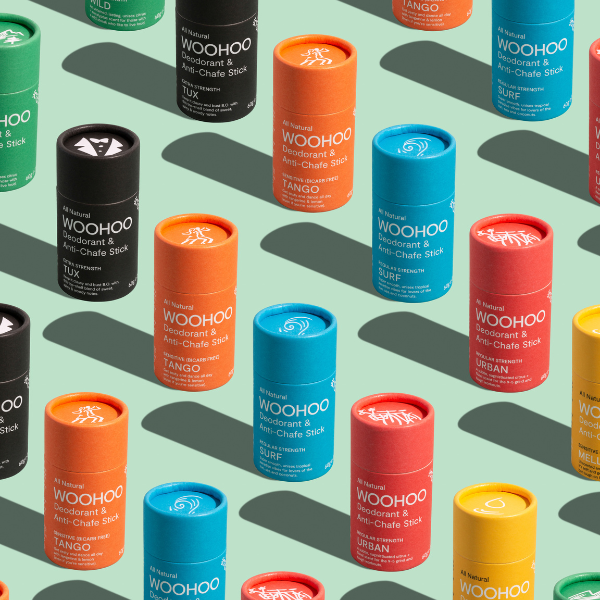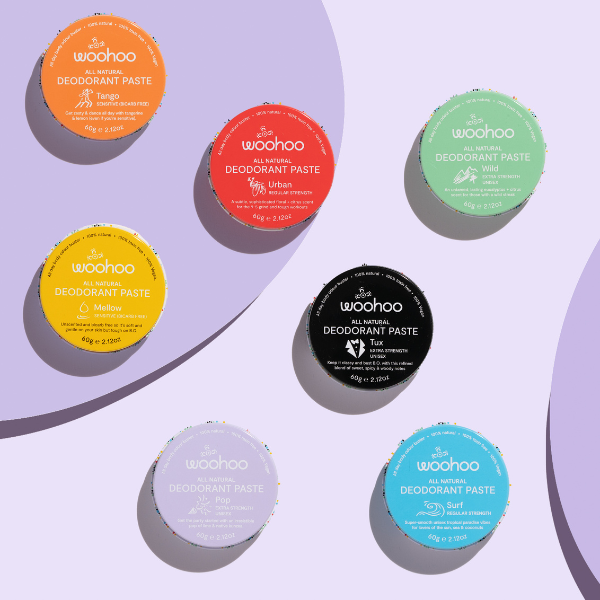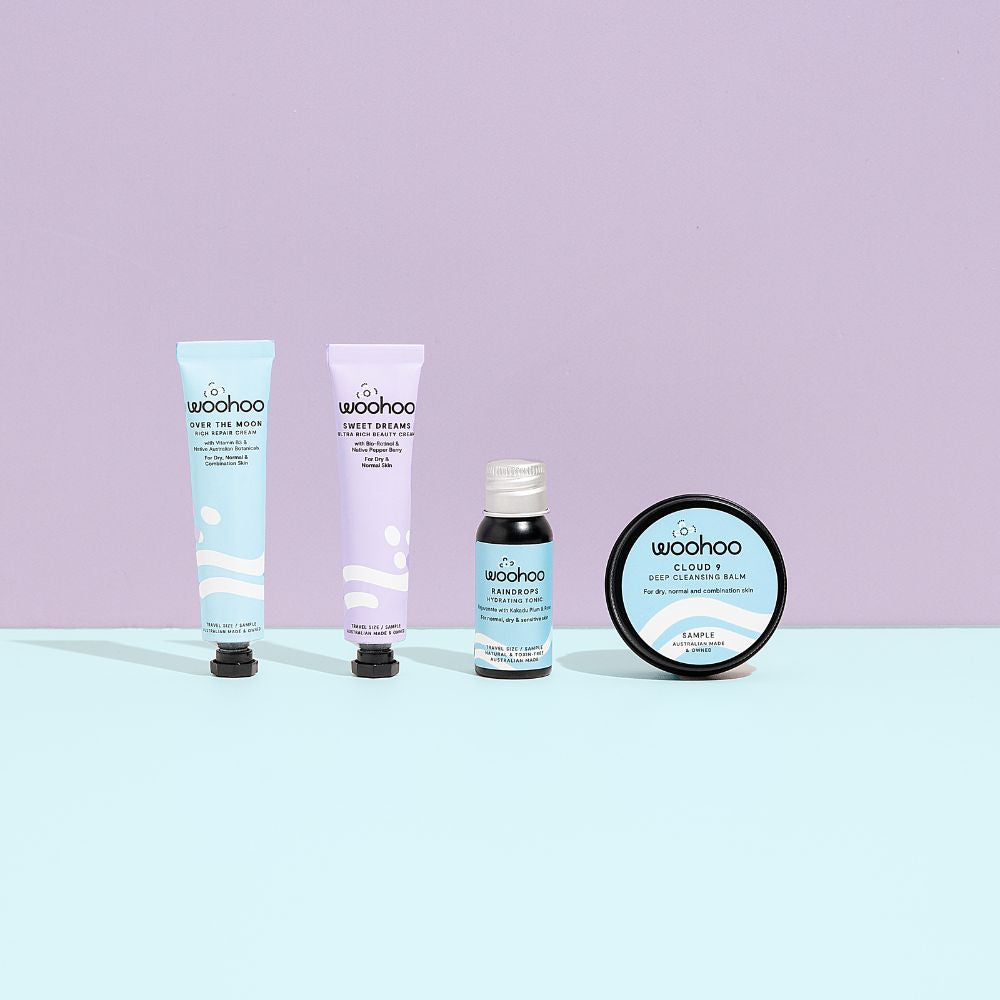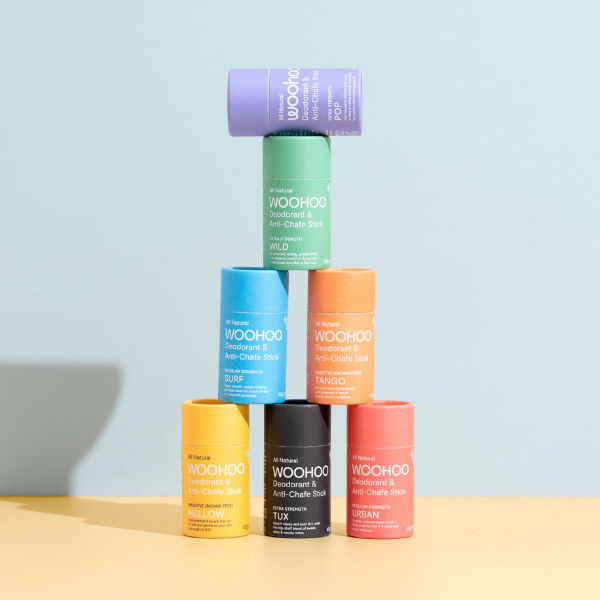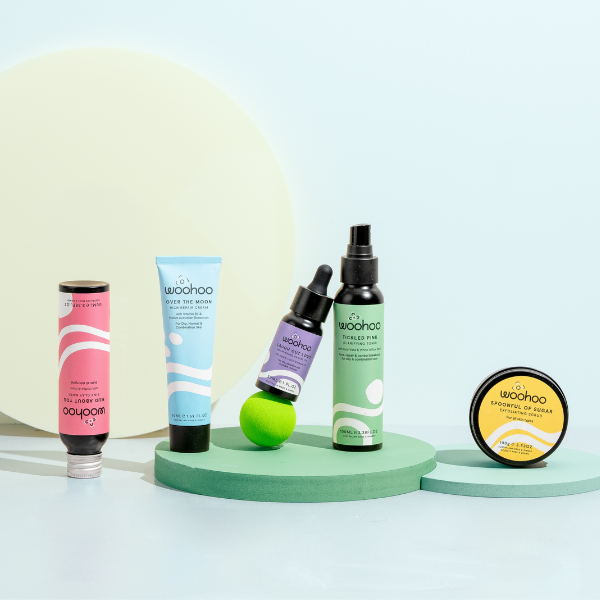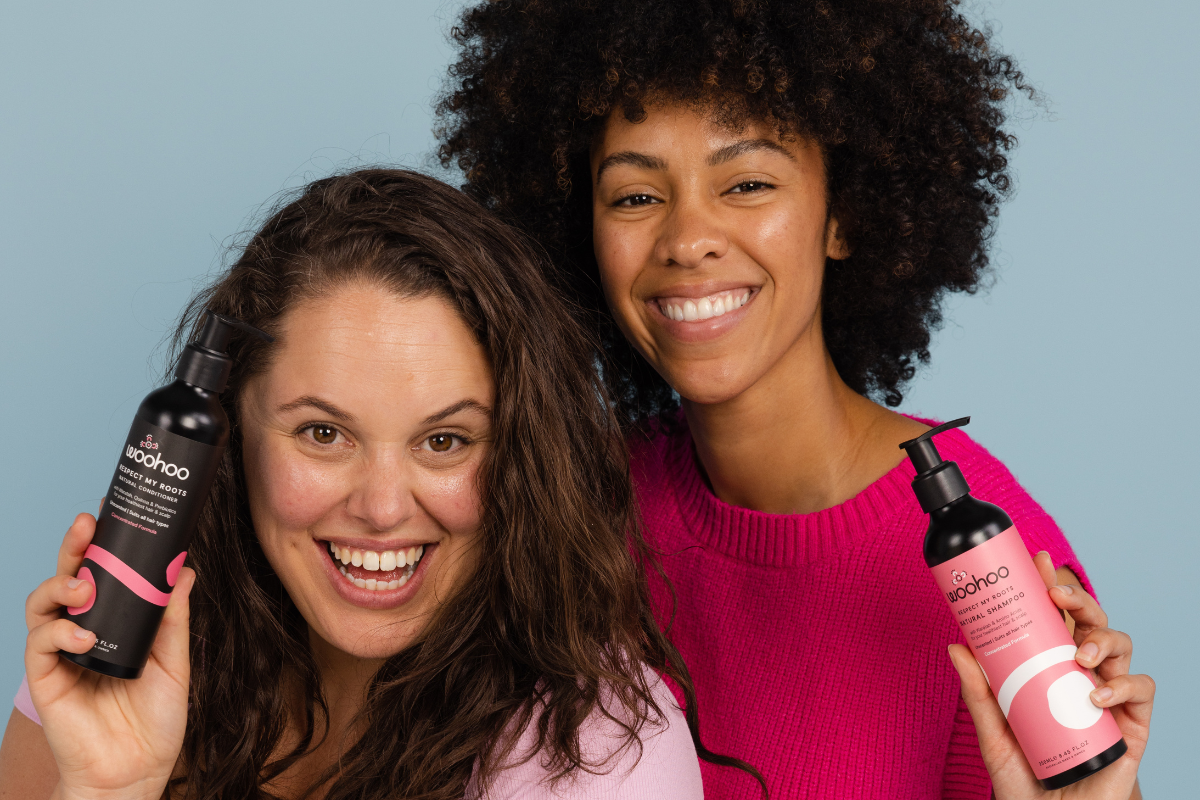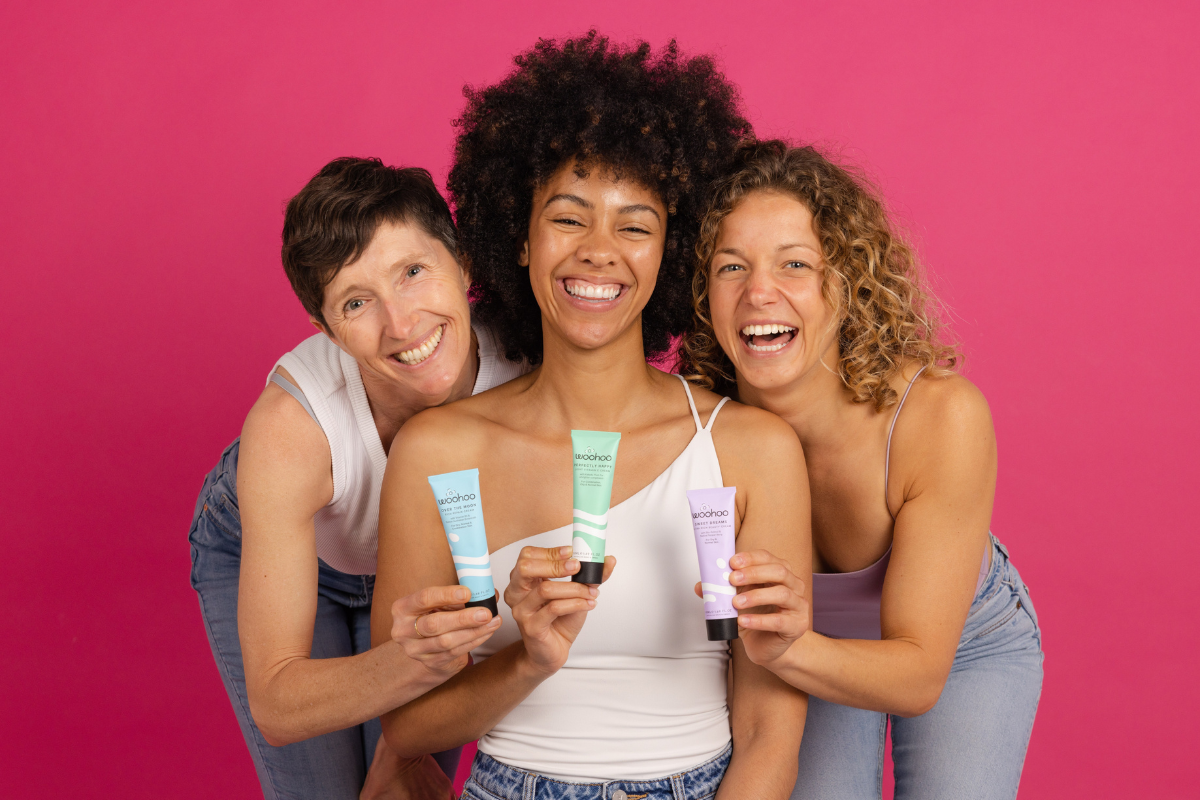
Want to know one of the most notorious types of acne? *Cue Jaws theme*
Yep, you guessed it: cystic acne.
The cystic acne variety - which can be brought on by monthly hormonal cycles - can be wayyyyy more intense to deal with than your average zit.
There’s no making friends with a pimple that pulsates while you sleep, throbs when you smile, then disappears three months later, leaving behind a red or brown mark that takes forever to fade.
These stubborn blemishes aren't your usual surface-level pimples either: they're deeper, meaner, and a real challenge to evict from the face.
Thankfully it’s not all doom and gloom. There are a bunch of tried-and-true method that will help show cystic acne the ex-zit door.
But first…
What causes cystic acne?
Cystic acne results from a 'perfect storm' in your skin's pores—they get jammed up with oil and dead skin cells, leading to inflammation.
Things get dicey when this inflammation causes the pore to rupture under the skin, leaking into the surrounding tissue, sparking icky pus, increased inflammation, bacteria growth, and more breakouts.
A number of factors may be to blame:
- Family History - Like your dad's quirky sense of humour, cystic acne can be passed down through generations.
- Hormonal Changes - From teenage years to menopause, our bodies ride the hormonal roller coaster, and cystic acne is one of the side-effects. Fun! However, it's not exclusive to women; hormonal changes in men can also lead to cystic acne.
- Climate and Lifestyle - High humidity, sweating, and certain cosmetics can aggravate the sitch.
- Certain Medication - Some meds can stir the cystic acne pot.
- Lifestyle - Diet, lifestyle and some not-so-healthy habits can lead to serious skin eruptions.
- A bitta bad luck - The sebaceous glands in some people can be just naturally more sensitive to skin triggers, causing a larger and more frequent inflammatory response.
Symptoms to Spot
Thanks to their distinctive look—redness, swelling, pus—cystic acne is fairly easy to diagnose without any special tests. You might have:
- Big, red, painful breakouts on the face, chest, back, upper arms, shoulders, and/or thighs.
- Raised, red nodules (without the white head).
- Lesions that are felt before they're seen.
- Acne that comes with cysts and nodules in addition to papules and pustules.
- Breakouts that wince at your touch or even without it.
Do’s and Don’ts of Cystic Acne
Spoiler alert: perfect skin doesn't exist, which is fine! However, the truth is that acne in your adult years can be a real bugger. And there’s no shame in wanting to control those mighty bumps. Stop panic-googling—we’ve gotchu.
1. Don’t pop em’
Hands off! Cystic zits literally cannot be popped, since they have no connection to the surface of the skin. Popping will only exacerbate the inflammation, leaving you with potential scarring and the risk of infection. Even if it has the tiniest of whiteheads on top and you want to make Dr Pimple Popper proud, don’t—cystic acne runs deep, and you’ll always (always) make it worse.
2. Do ice it
Icing can really can help your cystic breakout, to some extent. By applying an ice cube directly to the affected area, you can constrict the small blood vessels supplying the painful cyst, providing a potential reduction in its size and redness. Apply an ice cube wrapped in a paper towel or napkin to your zit for 1-2 minutes with breaks in between.
3. Don’t be a cow 😉
It’s no secret that dairy can be hard to digest for some people. And it can also be a real troublemaker when it comes to causing acne eruptions, according to a study by Aghasi et al. (2019). So even if you're not lactose intolerant, taking a break from dairy might improve your skin.
4. Do chomp on probiotic-rich foods
In a study by Kim et al. (2018), it was found that acne patients who consumed a Lactobacillus-fermented beverage saw a significant reduction in their acne lesion count and experienced less oil production over a 12-week period. So, for the love of your skin, don't shy away from probiotic-rich food and drinks (looking at you kefir, kombucha and sauerkraut!).
5. Don’t forget to dose up on zinc
A review published in Dermatologic Therapy highlighted the potential role of zinc deficiency as a contributor to acne [Gupta et al., 2014]. So, go ahead and indulge in some beans, nuts, and whole grains (or our non-vegans friends can snack on oysters) to ensure an adequate intake of this essential mineral for your skin health.
6. Do give yourself a steam facial
Steaming your face can help cleanse and clear your pores (though, they won’t shrink them). You don’t need special gadgets, just a kettle, bowl, and a towel will do the trick and make you feel refreshed after 5 or 10 minutes. Adding herbs and skin-soothing essential oils like rosemary, tea tree, lavender and eucalyptus are good choices when looking to clear cystic acne.
WARNING: Don’t get too close to the hot water or let it come into contact with your skin as it could cause burns or capillary damage
Natural Skincare for Cystic Acne
Gone are the days of using harsh Benzyl Peroxide and tea tree oil to help clear breakouts, or glycolic acid to resurface the skin!
To the rescue: the Woohoo products that will help care for cystic acne — and any other kind of pesky acne — once and for all.
Aside from cleansing and moisturising, consider adding these products to your cystic acne arsenal:
- Before going to bed apply a drawing clay paste and let it do its thing. Our personal go-to is using the Pig In Mud Mineral Mask mixed with Tickled Pink Clarifying Tonic. The Tickled Pink contains White Willow Bark which is high in salicin which the body turns into salicylic acid which is used to reduce inflammation and pain. The clay in the mask helps to draw that sucker to the surface so that it is no longer trapped deep in your pore.
- Once the healing has begun, check out the FG Serum 02 - Clear to help that popped pimple recover fast and with minimal scarring. If you love oils, we've found that Black Seed Oil is also marvellous for skin repair and reducing scars. You can layer the serum and oil together for best results.
- Once or twice per week in the evening, apply This Is Me Enzyme Exfoliating Mask - a highly active gel mask that helps lessen the effects of pesky breakouts and doubles as a fantastic spot Gentle, non-abrasive exfoliants (AHAs, BHAs and PHAs) made from fruit enzymes promote healthy skin turnover and a brighter complexion. For a spot treatment, just pat a small amount onto the blemish. Please monitor your skin carefully when doing this and if your skin starts to show redness or tingle, it's time to remove it.
- For extra healing prowess, the Colloidal Silver in Mud About You Pink Clay Mask is a powerful anti-inflammatory that may help reduce redness, and encourage skin recovery and repair from breakouts. Use as you would a regular mask 1-2 times per week (alternating between this and This Is Me Enzyme Exfoliating Mask).
Most of the goodies we mentioned above can be found in our deluxe sample pack for oily and acne-prone skin.
If your cystic acne just won’t get the hint, you may need to work with a dermatologist and/or skin naturopath to fully treat your cystic zits, especially if you’re dealing with more than 1-2 onslaughts a month. Never be afraid to ask for help if the situation goes a bit awry! And remember, bumps and lumps don’t make you less of a human. You are fabulous and wonderful the way you are, but it’s a-OK to want to feel good and glowy in the skin you’re in 😊
References
- Aghasi, M., Golzarand, M., Shab-Bidar, S., Aminianfar, A., Omidian, M., & Taheri, F. (2019). Dairy intake and acne development: A meta-analysis of observational studies. Department of Community Nutrition, School of Nutritional Sciences and Dietetics, Tehran University of Medical Sciences, Tehran, Iran. Retrieved from here.
- Gupta, M., Mahajan, V. K., Mehta, K. S., & Chauhan, P. S. (2014). Zinc Therapy in Dermatology: A Review. Dermatology Research and Practice, 2014, 709152. Retrieved from here.


